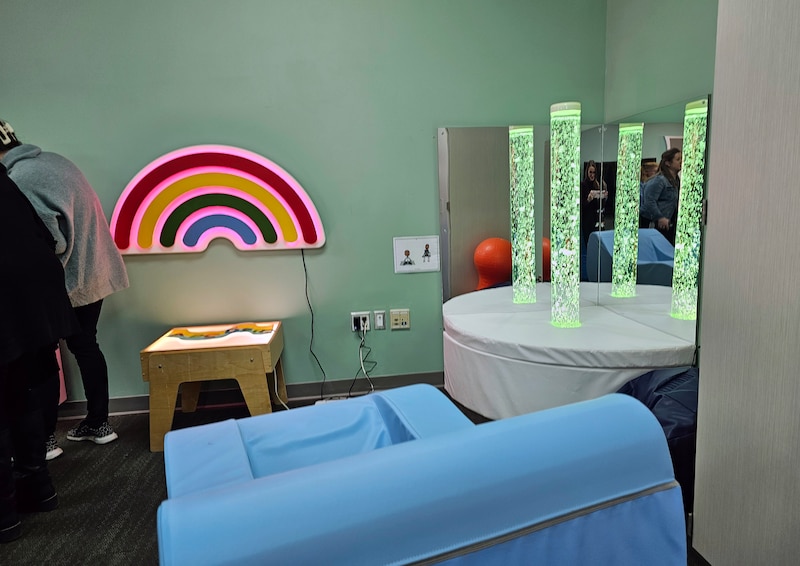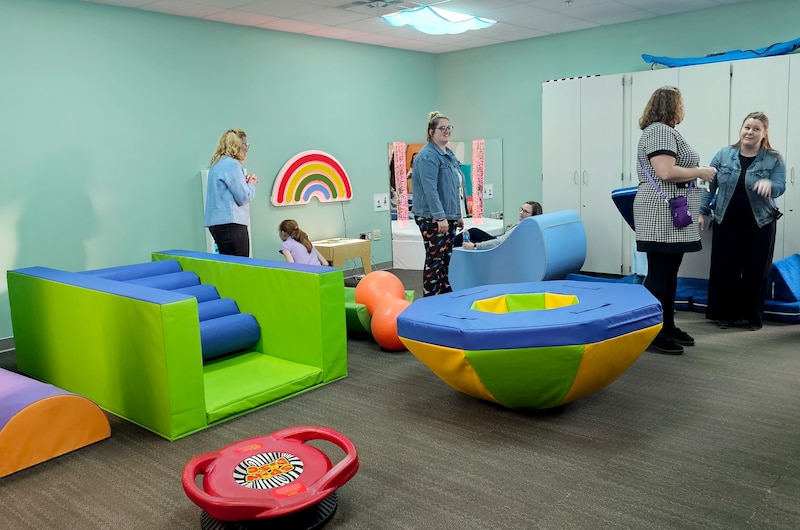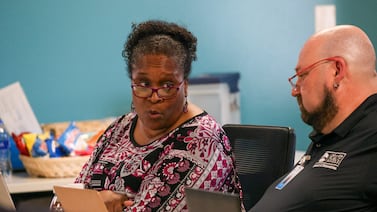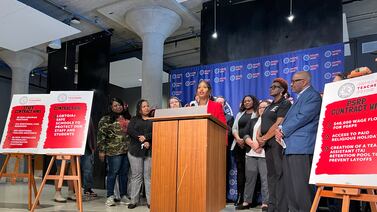Sign up for Chalkbeat Indiana’s free daily newsletter to keep up with Indianapolis Public Schools, Marion County’s township districts, and statewide education news.
The first thing a student might notice in Burkhart Elementary School’s new sensory room is the light tube. Or maybe the slide. Or the trampoline and crash mat.
There are magnetic tiles on a wall to the right and scooter boards all over the floor.
The room invites play, but it also serves a purpose: To help students calm down — or wake up — and get ready to learn.
“It’s such a cool opportunity, because there’s not a child in the school who couldn’t benefit from it,” said Brooke McDonald, the school’s occupational therapist who supervises the room.
The sensory room at Burkhart opened last week thanks to a $9,000 grant from the Perry Education Foundation. It’s a first for the school and only the second such space in Perry Township elementary schools, said the foundation’s president, Mary Blake.
In addition to funding the project, foundation representatives assembled the furnishings, painted the room teal blue, and dimmed the overhead lights with fabric hangings.

It’s open to all students who need it for a few minutes at a time, said McDonald, who also trains classroom teachers to determine which students might benefit from a break in the room. Only a few students at a time will use the room.
It will also serve as an important space for students in the Comprehensive Intervention Program, the self-contained special education program. Two of these classrooms opened at Burkhart this year after Perry redrew its attendance boundaries.
What each student needs from the sensory room will vary.
CIP teacher Ailis McCarthy said her students who get overwhelmed with noise and activity benefit from spending a few quiet minutes in the room in the dim light or watching the bubble tower. After that, they’re able to rejoin the group for their regular activities, she said.
Before the sensory room opened, McCarthy’s students would try to take these breaks in her classroom — which can be distracting to others, she said.
“We make sure they have regular time in their schedule to decompress or bring them up, depending on what they need, and that room has enough activity that they could do both,” McCarthy said.

McDonald said some students may use it as a space to calm down at the end of the day, do movement exercises, and watch the bubbles in the light tube. Others may jump on the trampoline or rock on the soft foam spinners to burn some energy and regulate their emotional state ahead of a lesson.
“All of that is good for your body, and they have no idea,” McDonald said. “They just think, ‘I’m playing on the slide.’”
The district hopes to open sensory rooms at each of its elementary schools, said Vickie Carpenter, assistant superintendent for foundational learning.
Aleksandra Appleton covers Indiana education policy and writes about K-12 schools across the state. Contact her at aappleton@chalkbeat.org.







